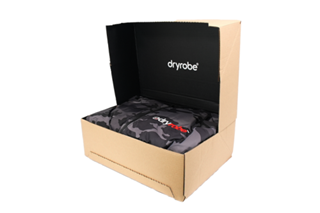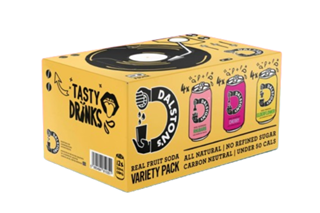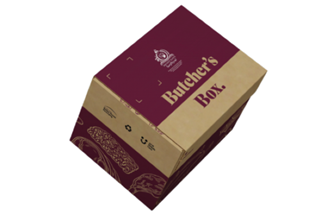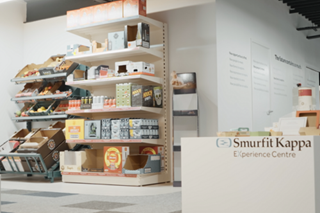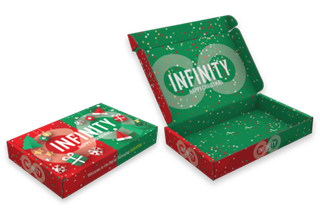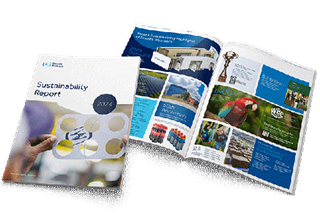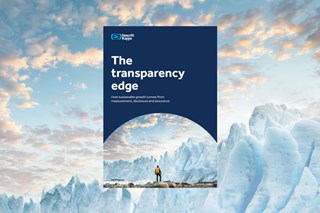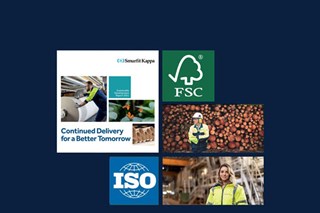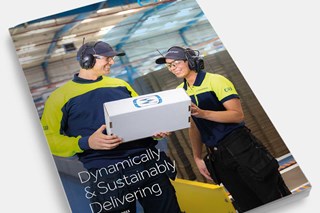Fresh meat packaging: Choosing the right insulated delivery box

In the past few years, there's been a boom in online food delivery services, somewhat spurred on by the challenges posed during the COVID-19 restrictions. A time when trying to snag some meat and poultry was like navigating a culinary obstacle course. The rising demand for doorstep dining is also a direct response to the modern consumer's growing love affair with convenience, with 43% of consumers planning to increase online shopping in the next six months (PWC), and, 60% of consumers saying that a convenient shopping experience remains a high priority when spending with a retailer (Internet Retailing).
So, with more and more consumers choosing the convenience of ordering meat and poultry products online, the industry has placed more emphasis on fit-for-purpose packaging solutions that guarantee quality and safety.
Packaging plays a pivotal role in preserving the freshness of meat and poultry during shipping. Advanced packaging solutions tailored specifically to the food and drink market, to prevent contamination and maintain an optimal temperature, ensure that food remains edible and in line with strict safety standards.
Committing to using quality packaging acts as a competitive advantage in the increasingly crowded eCommerce marketplace.
- What are the key packaging requirements for fresh meat?
- Why is temperature-controlled packaging important?
- What are the different types of insulated packaging materials?
- How are consumers seeking brands that use sustainable insulated packaging?
- How do insulated packaging costs impact your business?
- Why do customer experience and feedback matter?
- Conclusion
What are the key packaging materials for shipping fresh meat?
When packaging fresh meat, you need to comply with food safety regulations. You also need to ensure that everything is traceable, by clearly and accurately labelling products, and including batch numbers. It’s not only important for good practice, but also a legal requirement to use food-grade packaging materials, which means packaging that doesn’t transfer any other substances to the meat or poultry.
When fresh meat is shipped, it must be insulated using thermal meat packaging materials to make sure it maintains the required temperature.

Packaging also needs to allow enough ventilation to avoid condensation and moisture damage, showing there’s much more to eCommerce food packaging than simply getting products from A to B.
Why is temperature-controlled packaging important for fresh meat?
- Safety - Strict temperature control is vital to ensure food is safe to consume. It prevents bacteria from growing, which reduces the risk of consumers becoming ill after consuming the food, a key part of safeguarding consumers' health and a mandatory requirement of food and drink retailers.
- Preserving freshness - Temperature control is key to preserving the freshness of meat. By keeping temperatures low, it slows bacterial growth and extends the shelf life of the product. This means that consumers receive high-quality meat that is safe for consumption, reflects positively on your brand and encourages repeat purchases and peer recommendations.
- Quality retention - Temperature changes can negatively impact the flavour and quality of meat. By precisely controlling the temperature, the packaging and transportation process can help maintain standards so that consumers receive the high-quality meat they expect.
Temperature control can be managed by insulated packaging which acts as a barrier against external temperature variations, protecting meat and poultry. Cold packs are often used within packaging products to help regulate the temperature.
Many brands in the food industry use wool insulation to control temperatures during shipping, offering natural temperature regulation. However, this is a less environmentally-friendly form of insulation for meat packaging, and research shows that 94% of consumers believe brands should produce environmentally friendly products and 61% express the view that they shouldn't need to consider sustainability while shopping (Deloitte Global). This shows that the expectation for sustainability has shifted from a mere demand to an everyday consumer norm.

See how Borough Broth eliminated their need for wool insulation with an insulated corrugated cardboard packaging alternative.
What are the different types of insulated packaging materials for meat and poultry food delivery?
- Expanded Polystyrene (EPS) packaging – Traditional EPS packaging has excellent insulation properties, effectively preserving the temperature of fresh meat and poultry during shipping. It also provides cushioning that protects meat from physical impact during transportation, reducing the risk of damage in transit and disappointing customers on delivery. However, an unmissable pitfall of EPS packaging is that it's not recyclable within the recycling infrastructure and, with a study by Drapers showing that 65% of respondents stated that knowing that packaging is recycled is important, brands need to explore more sustainable solutions and closed loop options for insulated packaging that align with changing consumer attitudes.
- Cardboard packaging - Cardboard is commonly used in packaging mainly because it’s recyclable and biodegradable. This aligns with ecological packaging practices and helps brands satisfy the growing numbers of environmentally conscious consumers who value efforts to reduce negative impacts on the planet. There is a wide range of design options with cardboard meat boxes, with various shapes and sizes available to accommodate different cuts of meat. We know that cardboard alone is not as insulating as other packaging materials, and it's at risk of moisture damage which can compromise its structural integrity and impact the quality of the product. However, when combined with cleverly designed internal components that help create layers and plastic-free water-resistant coatings, it delivers phenomenal insulation properties. This ensures products are delivered in optimal condition and the packaging remains 100% recyclable.
- Recyclable options - Packaging made from recyclable materials helps your brand align with environmental initiatives and reduce the impact of packaging on the planet. Consumers also value brands that take steps to minimise their environmental impact, with the Drapers survey revealing that 42% said using recycled content is important. Many recyclable options are both good insulators and biodegradable, leading to a reduced carbon footprint while protecting meat and poultry during shipping.

See how we worked with Sutherlands of Portsoy to create 100% recyclable packaging for shipping fish.
How are consumers seeking brands that use sustainable insulated packaging?
As the eCommerce industry continues to thrive, there’s a growing interest in green packaging practices and frozen meat shipping boxes. Brands are becoming increasingly aware of the environmental impact of meat packaging materials, which leads to them purposely choosing less harmful packaging options.
Environmentally friendly alternatives - such as recyclable materials and biodegradable packaging - have emerged as viable and popular ways to address both brands’ and consumers’ concerns about packaging.

Not only does sustainable packaging reduce a brand’s environmental impact, but it showcases their commitment to corporate social responsibility. This can lead to a positive brand perception, especially amongst environmentally conscious consumers such as GenZ shoppers, many of whom make a conscious effort to read green messages displayed on packaging and make buying decisions based on how sustainable a business is (Duo).
In addition to this, in 2021 the CMA launched the Green Claims Code, following a study that 40% of green claims made online could be misleading.
Therefore, business’ green claims MUST:
- Be truthful and accurate: Businesses must live up to the claims they make about their products, services, brands, and activities.
- Be clear and unambiguous: The meaning that a consumer is likely to take from a product’s messaging and the credentials of that product should match.
- Not omit or hide important information: Claims must not prevent someone from making an informed choice because of the information they leave out.
- Only make fair and meaningful comparisons: Any products compared should meet the same needs or be intended for the same purpose.
- Consider the full life cycle of the product: When making claims, businesses must consider the total impact of a product or service. Claims can be misleading where they don’t reflect the overall impact or where they focus on one aspect of it but not another.
- Be substantiated: Businesses should be able to back up their claims with robust, credible, and up to date evidence.
How do insulated packaging costs impact meat business?
The cost-effectiveness of chilled meat packaging is a key consideration for eCommerce brands, as using the correct packaging can be a way to drive significant cost savings. By acting as a proactive barrier, the right packaging can minimise returns and save brands the costs that come with them. It’s important to customise packaging solutions to the products they’re being used to pack.
Choose or create packaging that caters for the specific and different needs of products, such as poultry, beef, or seafood. Packaging that is not fit-for-purpose can result in negative customer experiences, as we found in our street interview.

Expertly designed packaging reduces the likelihood of product damage, encouraging repeat purchases and creating advocates for the quality of your products. With 87% of people now using social platforms when making shopping decisions (Social Media Today), you want to ensure your customers’ comments reflect positively on your brand online.
See how The Ginger Pig reduced product damage and improved unboxing experience using an insulated cardboard packaging for meat.
Why do customer experience and feedback matter?
Packaging is a big part of a customer’s experience with an eCommerce brand, as it’s often the first tangible interaction they have with a product. As well as having obvious functional benefits, eCommerce food delivery packaging is a visual representation of a brand’s identity. Consider getting creative with your packaging, whether it’s through interactive features or incorporating technology like QR codes; there are many ways you can use your packaging to enhance the customer experience.

Plus, thoughtfully designed and well-branded packaging creates a positive first impression, improving the overall perceived value of the product. This boosts customer satisfaction by making the unboxing experience memorable, shareable and something they’ll want to repeat by becoming a loyal customer.
The attention that goes into packaging reflects well on the brand as a whole, highlighting your commitment to quality and care. This creates a sense of trust and loyalty amongst consumers. This, paired with sustainable packaging, engages environmentally conscious consumers and shows your brand cares about its impact on the planet.
Conclusion
At Smurfit Kappa, we know how important it is to package eCommerce products correctly, especially fresh meat and poultry products.
With our range of eCommerce packaging solutions, from cardboard meat boxes to frozen meat shipping boxes and chilled meat packaging to insulated meat boxes, we can help you package fresh food with the environment in mind and give your customers an experience with your brand they’ll remember for all the right reasons.

